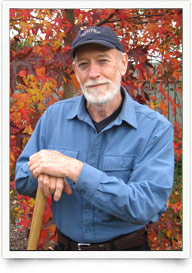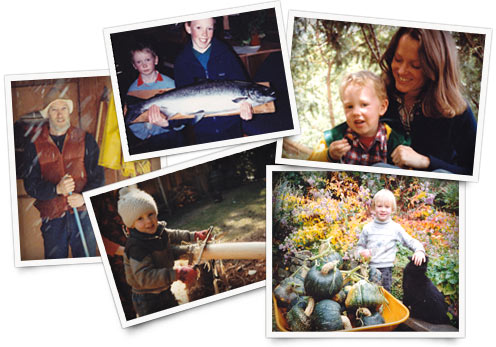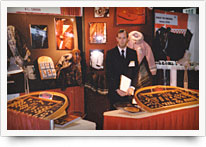
Hello! My name is Greg Seaman, and I’m the founder of Eartheasy. Here's a little information about my background and how Eartheasy came into being.
A native of Long Island, New York, I was raised in a typical middle class home with two working parents and four children. After graduating from university, my first job was supervisor of the Centennial Exhibit at the American Museum of Natural History. The exhibit was called "Can Man Survive?", and was a multimedia presentation of the impact of our modern lifestyles on the health of the environment. It illustrated how the earth's carrying capacity was threatened by excessive energy consumption, pollution, overpopulation and unsustainable development. It was a real eye-opener, and this was 1970! Little did I know at the time that this job experience was the seed which would ultimately lead to the development of the Eartheasy website.
My career path took me to jobs in New York, Boston and San Francisco. But while city living was fun and stimulating, I longed for a simpler life in a natural setting, where I could focus on raising a family and explore ways of living more lightly on the earth. At age 30, my wife Lindsay, infant son Ben and I were presented with a unique opportunity to live on a small rural island in the Pacific Northwest. After months of deliberation, we decided to give it a try.

Life on the island was a little like Swiss Family Robinson. With no electricity, services or even a road to our home, we learned to embrace the dictums of rural lifestyle: look to yourself for solutions, and be happy with what you have. We grew our own produce in our beautiful organic garden and orchard, we fished, gathered clams and oysters, raised chickens and traded with neighbors for extras. Our home was built by hand, using old-fashioned hand tools and recycled materials from stately old homes being demolished in Victoria to make way for condominiums. Natural materials from the forest, such as fir poles and hand-split cedar shakes, helped give our home a unique character, and the process of learning to use these materials fostered respect for nature's bounty. To learn more about our island lifestyle, read What it's Like Living Off Grid.

While our cost of living was low, we still needed some income. In partnership with two friends, I helped develop a business which made wooden buttons and products for the gift and souvenir market, using discarded branches and left-over scraps from the logging industry as our raw materials. We used these “waste” materials to develop a line of over 20 products and provide work for over 20 employees. Much of the machinery used to process the branch material was made using recycled components, and many parts came from old bicycles! (Photo: Our buttons on display at a trade show in New York.)

Over the years our two children grew and thrived in a close family environment. With little access to TV, our entertainment became our own creation - music, art, homemade games and family horse-play filled our evenings. Our children, and most of the island children it seemed, developed a strong sense of self from being grounded in nature and having the benefit of a close community where income, style of clothing, possessions and social status were not important.
When our children came of high school age, they needed to move off-island, since our two-room schoolhouse only went to grade 8. My wife was the house parent "off-island" during those years, and worked as a teacher’s aide for children with special needs, while I split my time maintaining our homestead and joining my wife in town.
There was one great benefit to being in town – the internet! With access to electricity and an internet connection, I was able to learn web design and create the Eartheasy website.The goal was simple: to encourage, inspire and inform people about the benefits of a simpler, less material lifestyle, and the importance of protecting our natural environment as the source of our well-being. I wanted to see a website where a wide range of information about sustainable living could be found in one location, and enough content for each topic so you didn't need to click from link to link trying to piece together information.
Most of the pages on Eartheasy come from first-hand experience. The gardening pages, composting, home-efficiency pages, food preservation, non-toxic home care, alternate energy, natural pest control, and family play activities come from over 40 years of past living experience. Others come from many hours in the library, on the web, interviewing experts in various fields, and from many site visitors who've contributed a wealth of information. The drawings on the site are my own, and many of the pictures come from our family album.
It's not my intention to suggest we all live a rural lifestyle. Much of what we've learned can benefit people in any setting - urban, suburban or rural. If Eartheasy gets you thinking about what constitutes true wealth in your life, and the implications our lifestyle and consumer choices have on the environment, then this web project will prove worthwhile.
~~~~~~~~~~~~~~~~~~~~~~~~
Read more about our mission, and our efforts to reduce our environmental impact.
